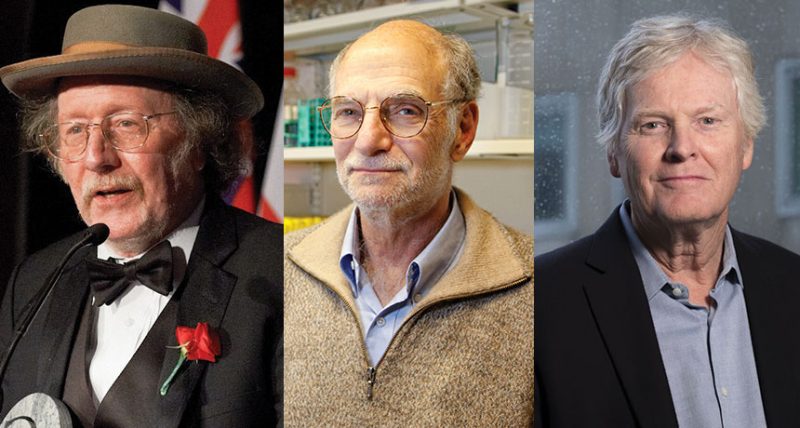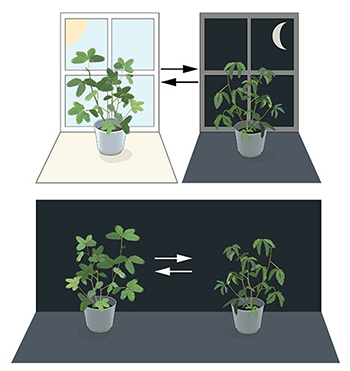Understanding body clocks brings three a Nobel Prize
Award for physiology (and medicine) goes for understanding proteins that time the body’s functions

A physical clock can help you keep time, but so does an internal body “clock.” Work to understand that body clock just garnered three Americans a Nobel Prize in physiology or medicine.
artisteer/iStockphoto
By Tina Hesman Saey and Aimee Cunningham
Inside the body of animals are chemicals that work together like the gears of a timekeeping device. Scientists refer to the actions of this system as the body’s “clock.” For helping discover how this clock works on the molecular level, three Americans have just won the Nobel Prize in physiology or medicine.
All three worked with fruit flies. Their findings, however, appear to relate well to many other animals, including humans. Indeed, “an awful lot of what was subsequently found out in the fruit flies turns out also to be true and of huge relevance to humans,” says John O’Neill. He’s a cell biologist in England. There, he too has been probing the body’s clock in studies at the MRC Laboratory of Molecular Biology in Cambridge.
Two of the three new Nobel Prize winners performed their groundbreaking work at Brandeis University in Waltham, Mass. Jeffrey C. Hall is a geneticist. Michael Rosbash is a molecular biologist. In 1984, the pair identified a gene called period. At the same time, Michael W. Young also found the period gene. He’s a geneticist at Rockefeller University in New York City.
Genes are like blueprints. Proteins are the chemicals that those blueprints make to do the work of a gene. It wasn’t clear, right away, how period controlled the activity of flies. The gene made a protein called PER. It turned out that PER’s role was to turn off its own production. That means it works like a feedback system. But it wasn’t clear how this clock could work with only one hand. And there were other mysteries.
For instance, the protein PER is made in a cell’s cytoplasm (SY-toh-PLAZ-um). That’s a cell’s jelly-like guts. But the period gene is located with the rest of a cell’s DNA in a compartment called the nucleus. No one knew how the protein got into the nucleus to stop its own production.
In 1994, Young discovered a second clock gene. He called this one timeless. Like period, it is found in virtually every cell of the body. And the protein that this gene produces (TIM) teams up with PER. Together the two proteins slip into the nucleus and shut off their own genes.
Those are just two important inner gears of the clock. Those gears not only make the clock go around but also make sure other body activities follow a schedule. Young also discovered a third clock gene, known as doubletime, and its protein DBT. This last protein helps set the clock’s pacing.
But this internal clock is even more complex. Hall and Rosbash have found additional clock gears in their research.
National Science Foundation Director France Córdova notes that all three of this year’s winners have benefitted from her agency’s funding. Their findings, she says, “have significant implications for health and wellness, and connect with our daily lives every time we go to sleep or wake up.” These discoveries also show yet again that putting public funds to work probing biology across of a wide variety of organisms and scientific disciplines “yields results that benefit society.”
All three of this year’s winners will pick up their prizes at a December ceremony in Stockholm, Sweden. At the event, they will each receive a medal and a Nobel Diploma from King Carl XVI Gustaf of Sweden. They also will also share a monetary award now valued at slightly more than $1 million.
Story continues below image.

What is a body clock?
The body’s clock is known as a circadian (Ser-KAY-dee-un) system. That term means “almost a day.” So the body’s clock runs on a schedule that is nearly — but not precisely — 24 hours long.
Circadian clocks consist of networks of genes and the proteins that carry out their functions. Together, these pairings control the body’s daily rhythms and cycles. These clocks control everything from when we sleep and when the body releases hormones, to the daily change in body temperature, blood pressure and other phenomena. Circadian rhythms also help organisms, from plants to people, anticipate and adapt to daily cycles of light and darkness and to temperature changes caused by the Earth’s rotation.
When circadian rhythms are thrown out of whack, people feel uncomfortable with what commonly is known as jet lag (even if you never set foot on a plane). Shift workers and people who regularly get too little sleep may experience long-term jet lag. This has been linked to serious health problems. Among diseases linked to such a chronic lack of enough sleep: cancer, diabetes, heart disease, obesity and depression.

Hall, Rosbash and Young are hardly the first scientists to work on the body’s clock. Other scientists had already established that plants and animals show circadian rhythms. In 1971, for instance, Seymour Benzer and Ronald Konopka found that mutations in single fruit-fly gene disrupted the insects’ circadian rhythms. These flies were active at different times of day than normal. The affected gene? It was none other than period.
“But then people got stuck,” says Erik Herzog. He’s a chronobiologist (KRO-no-by-OL-oh-gizt) at Washington University in St. Louis. “We couldn’t figure out what that gene was or how that gene worked.” It took more than 20 years before Hall, Rosbash and Young figured out how the gene fits into the body clock.
“Time is indeed engraved in those molecular mechanisms,” says Derk-Jan Dijk. He’s a sleep and body-clock researcher in England at the University of Surrey in Guildford. Learning how the clock works, or doesn’t, he says, “adds a new dimension” to understanding why the body does what it does, when it does it.
The body has at least one master “clock” in the brain. But since the early discoveries by Hall, Rosbash and Young, other scientists have shown that nearly every cell in the body contains its own circadian clock. What’s more, almost every gene follows circadian rhythms in at least one type of cell. (For instance, some genes have rhythm in the liver but not in skin cells.) Explains Herzog, it’s normal to change over the course of a day.
Trouble develops when the body’s clocks get out of sync with each other, says Joseph Takahashi. He’s a neuroscientist at the University of Texas Southwestern Medical Center in Dallas. Genes such as cMyc and p53 help control cell growth and division, for instance. Scientists now know they are governed, in part, by the body’s circadian clock. Altering the clock’s smooth running could lead to cancer-promoting mistakes.
But while bad timing might lead to disease, scientists also have realized that giving drugs at the right time of day could make them more effective, notes Herzog. Such things show that in the body, as is so much else, timing is everything.
Reactions?
Rosbash joked during a news conference that the Nobel committee’s early morning phone call today disrupted his own circadian rhythms. When he heard that he’d won, “I was shocked, breathless really. Literally,” he told an interviewer from the Nobel committee, “My wife said, ‘Start breathing!’”
Young’s sleep was untroubled. His home phone is in the kitchen, so he didn’t hear it ring. The Nobel committee had to make its announcement without him. “The rest of the world knew, but I didn’t,” he recalls. He finally learned about it when Rockefeller University president Richard Lifton called Young on his cell phone. “This really did take me surprise,” Young said later at a news conference. “I had trouble even putting my shoes on this morning. I’d go pick up the shoes and realize I needed the socks. And then ‘I should put my pants on first.’”







